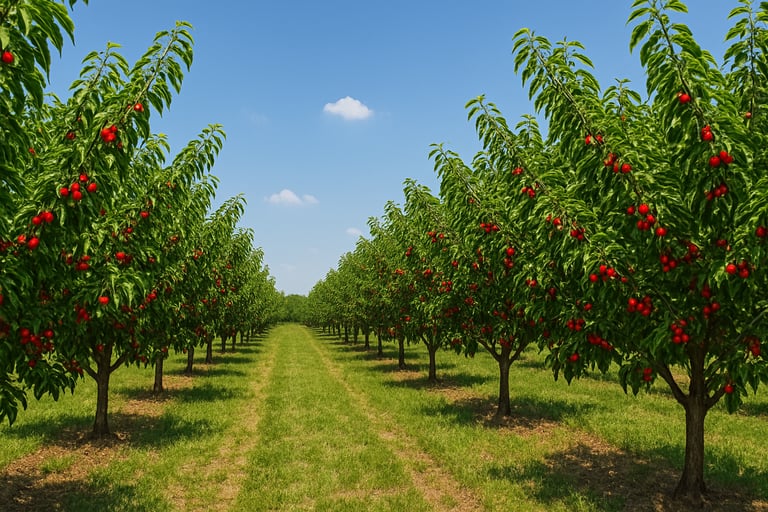Gentlemen! Under the roof of this building, I recall such happy and sweet memories!
-Mustafa kemal ataturk
The Story of The Cherry: A Family Tradition
Introduction
In the summer months, there’s a particular peace found in the shade of the cherry trees in our family orchard in the Çay district of Afyonkarahisar. Sunlight filters gently through the leaves, casting dancing shadows on the soil. The ripening cherries hanging among the branches stir both childhood cravings and heartfelt memories. This five-decare orchard is more than just a stretch of land lined with cherry trees; it is a living memory, deeply rooted in our family’s history. As we cool off beneath the cherry trees, it’s as if the stories from my great-grandfather echo softly through the breeze—this orchard is a bridge that blossoms between the past and the present.
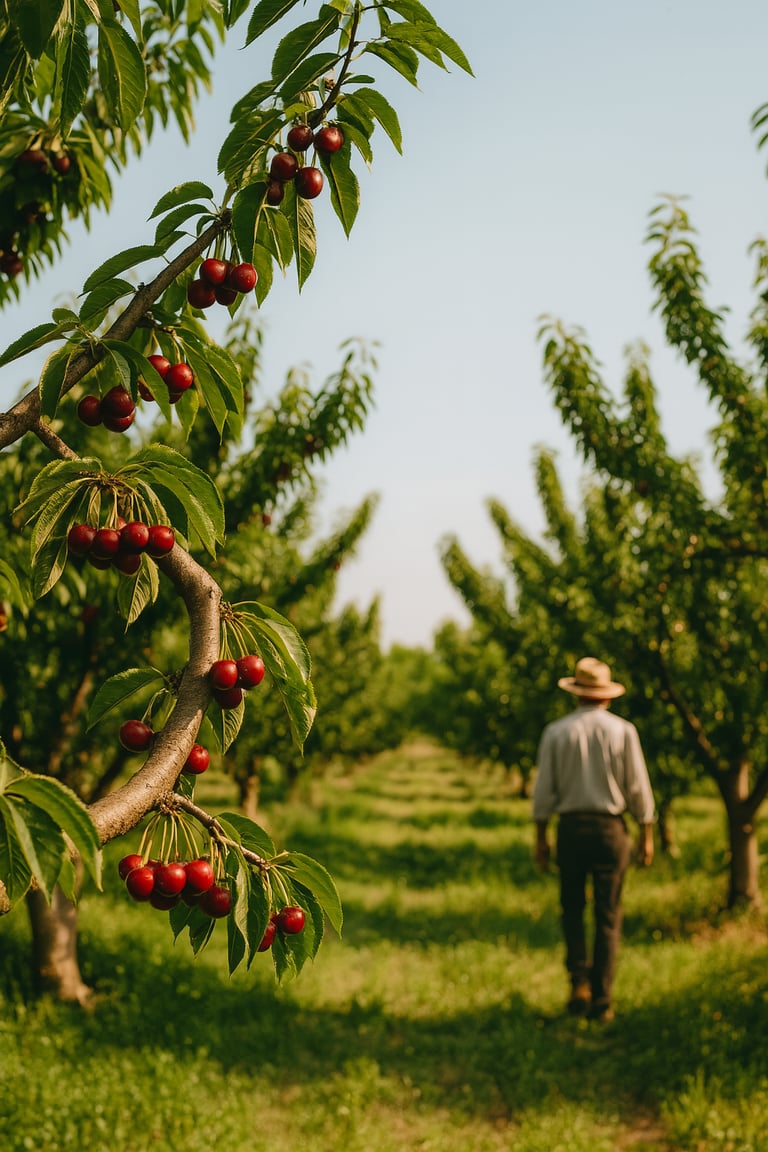

Historical Background and Family Heritage
The Çay district of Afyonkarahisar, along with the neighboring Sultandağı region, has long been a fertile center of agricultural life. Once blanketed with wheat, poppies, and various crops, these lands gained new fame in the mid-20th century as cherry cultivation—especially of the Napoleon variety—became a rising trend. When the high market value of these cherries became apparent, many farmers began replacing their fields with cherry trees. Our own orchard took root during those years. About 30 years ago, seeking innovation, my grandmother decided to plant cherry saplings on the family’s five-decare plot. What was a bold move at the time has become one of the most defining milestones in our family history.
As the saplings grew over the years, so did our family alongside them. When the orchard passed from my grandfather to his daughter—my grandmother—it was not only the land that was inherited, but also a legacy of responsibility and love. As the family matriarch and our guiding hand, she embraced the orchard as if it were her own child, nurturing it with unwavering dedication. In her youth, she would rise at dawn to water the young trees, which today provide shade for her grandchildren. Amid the difficulties of those times, she wore the hats of both mother and farmer—raising her children while tending to the orchard. Every new sapling planted under her guidance felt like a signature written into the future. This orchard stands today as a testament to generations of memory, labor, and belief.
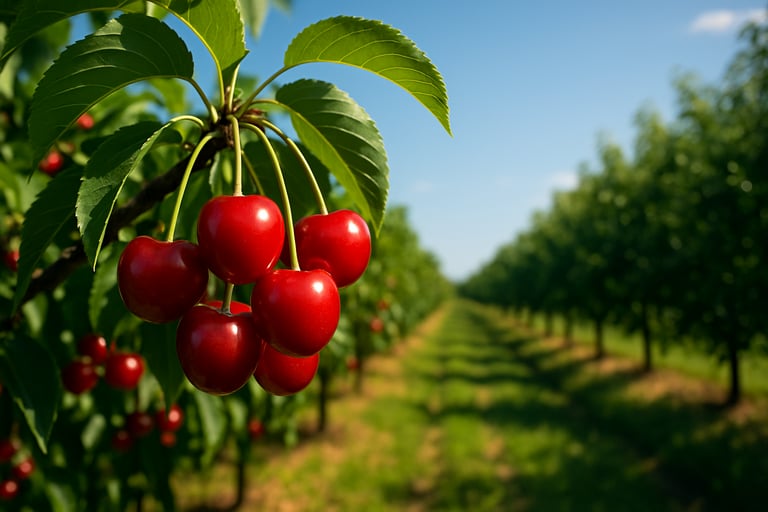

The Napoleon Cherry Variety
All the cherry trees in our orchard belong to a locally famous variety known as “Napoleon.” This cultivar, officially registered as the 0900 Ziraat cherry, originates from Anatolia and was developed through Turkish agricultural research. Over the years, it has earned the reputation of being the quintessential “Turkish cherry,” known for both its quality and resilience. Here are some of its standout characteristics:
Shape and Color: Large and heart-shaped fruits that turn from bright red to deep burgundy as they ripen.
Taste and Texture: Firm, crisp, and juicy flesh. Sweet and aromatic, these cherries stay fresh even immediately after being picked.
Stem Length: Long stems make them easy to harvest and help the fruit remain firmly attached to the branch.
Durability: Thanks to their thick skin and dense flesh, Napoleon cherries withstand long-distance transport and are therefore a top export choice.
These traits have given the Napoleon cherry a central role in Turkey’s agricultural economy. Our country ranks among the top cherry producers globally, and much of the Napoleon cherry grown in the Sultandağı–Çay region is exported to Europe. Markets from England to Germany seek out this large, dark-red cherry labeled proudly as “Turkish.” In our modest orchard, with its fifty-plus trees, we harvest a small but meaningful portion of this global product every June.
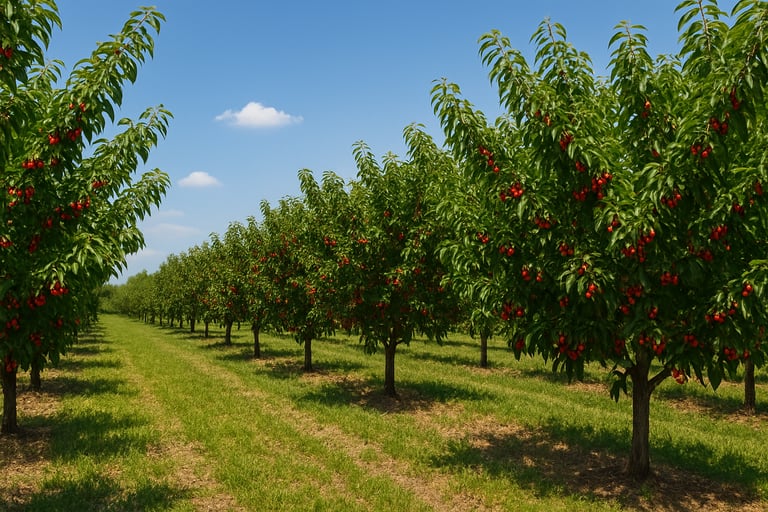

The Socio-Cultural Value of The Orchard
Our five-decare cherry orchard has been more than just a source of income—it has served as the heart of our family’s cultural life. It’s where our bonds are strengthened, seasonal traditions upheld, and shared memories preserved. Cherry harvest season is a time we await with excitement, almost like a holiday. By late June, the branches are heavy with fruit and painted in crimson hues. That’s when I arrive from Istanbul, my older brother comes from İzmir, and our uncles travel from Ankara. Together, we join forces in what we affectionately call the “cherry operation.” These days not only involve hard work but also moments of deep connection. Some of us climb ladders to reach the higher branches, others carry full baskets across the rows. My youngest cousin, the littlest member of the family, proudly takes on the task of picking up cherries that fall to the ground. Meanwhile, I often find myself alternating between climbing trees, manning the tractor, or balancing on a ladder—whatever the harvest demands.
Time spent in the orchard is not just physical labor; it’s a process of emotional bonding. When noon arrives, our picnic spreads under the trees: gözleme, börek, cakes, pastries prepared by my mother and aunts; warm bread from the village bakery we picked up on the way to the field; and Afyon’s signature dessert—kaymaklı ekmek kadayıfı (clotted cream bread pudding). These shared meals under the trees are at the very soul of the orchard experience. After the harvest, part of the crop is sold at the local market, while another portion is gifted to neighbors. Though we don’t harvest alongside them, this gesture keeps the spirit of community and generosity alive.
For the past two years, our newly installed drip irrigation system has made a world of difference. In the past, we wrestled with long hoses for hours to keep the trees watered. Now, with a planned and efficient setup, we save both labor and water. My grandmother was overjoyed when the system was installed—it had been her dream for many years. It's a perfect example of how tradition and innovation can grow hand-in-hand.
This orchard is also a living repository of our elders’ memories. My grandmother often shares stories about her childhood, how my great-grandfather cultivated this land, and the early days when the very first saplings were planted. As she speaks, her eyes gleam with pride and warmth. For us grandchildren, these stories are not just tales—they are a sense of identity, a heritage passed down through words and soil.
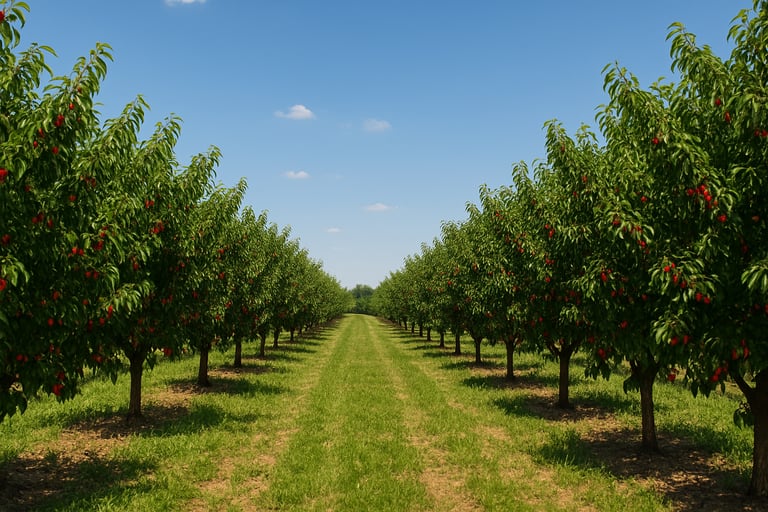

Sustainability and The Future
We’re exploring different ways to ensure the long-term sustainability of the orchard. Agrotourism is one idea: inviting urban visitors to experience the cherry blossom season or participate in the harvest could generate extra income while also sharing the story of our orchard. Cooperatives are another path—joining forces with local producers could improve marketing and access to larger markets. Digital storytelling is also on our minds: creating an online archive, blog, or even a short documentary featuring my grandmother’s stories, harvest tips, and photos of the orchard could help preserve this heritage and make it visible to people far beyond Çay.
Our goal is to preserve the orchard not just economically but also culturally. Even in the face of climate challenges and shifting labor dynamics, we are determined to adopt sustainable practices. As the younger generation, we’re committed to carrying this legacy forward—with new perspectives but the same deep-rooted respect. Perhaps one day, we’ll shift entirely to organic farming, or start our own cherry brand. What matters most is that the saplings my great-grandfather once planted continue to grow, and that new memories blossom beneath their branches.
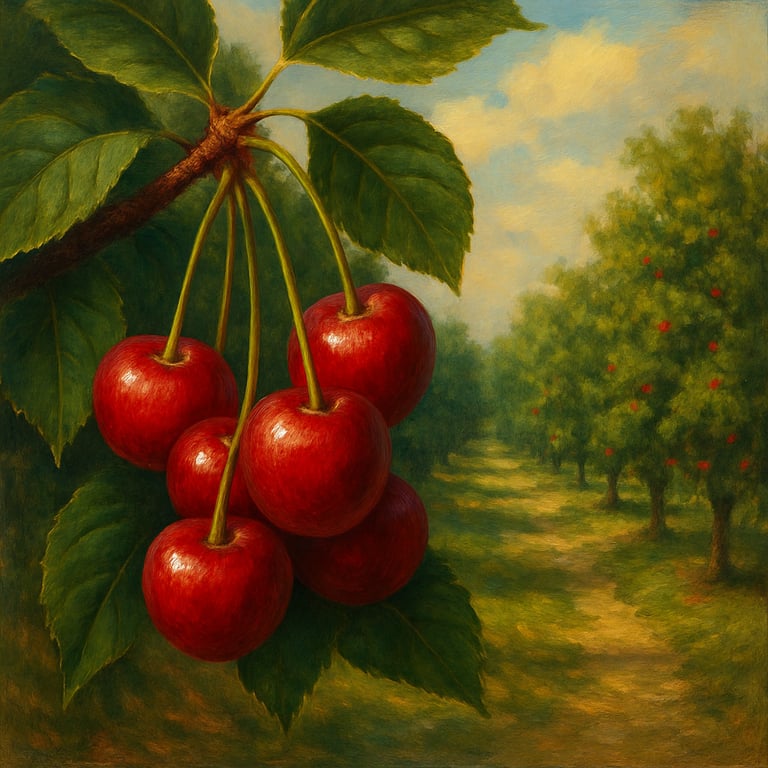

Conclusion
This five-decare piece of land is not merely an orchard—it is a family monument where past, present, and future intersect. Each tree trunk holds the labor of generations; each branch the joy of today; each leaf the hope of what’s to come. Beneath the shade of these cherries, we do more than cool off—we remember, we learn, and we rediscover the beauty of being together.
